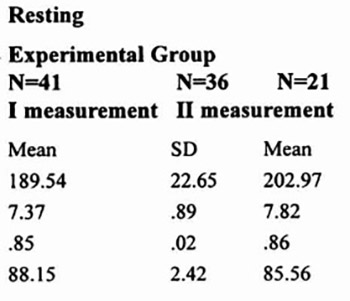Research project: State and Stimulation of Development in Children Aged 8-9 Living Under War Conditions
DOI:
https://doi.org/10.17305/bjbms.1998.3610Keywords:
child, development, warAbstract
The somatic, functional and metabolic characteristics of children at 8 years of age have been established. These children have, for the previous three years, lived under stressful conditions of direct shelling, poor nutrition and movement. At the same time there has been an evaluation of the effects of programmed physical activities which have been applied in the aim of stimulating natural physical dynamics and functional developments and the elimination of stagnation of development which occurs from conditions of unfavorable factors. The research and the program of physical activities included 41 boys, starting at an average age of 8 years and four months. The somatic characteristics of the boys, according to 25 antropo-metric measures (IBP), show a lag in the boy’s physical development according to their age group by one year. The lagging behind is especially evident in volume dimensions and underskin tissue fat (Przulj, 1991., Bonacin, 1995. Blaha, 1982.). An improvement of conditions and a greater scope of movement activities for the duration of 8 months did not significantly influence on the improvement of the somatic and functional status of the boys in comparison with the controlled group (N=21) of the same average age during another measurement period. While resting, on the level of aerobic threshold, anaerobic threshold and maximal oxygen uptake, the value of ergonometric, functional and metabolic parameters were confirmed: V02 stpd, Ve btps. Ve * V02-1, Ve*VC02-l, RQ, fc (beats*min-l), work load in Watts and on the basis of these relative indicators were completed. The gradual growth of work load was completed with the help of bicyklergometer (Monark). After 3 minutes of easy pedaling (warming-up) an initial work load was given of Watt*body mass and increased by 1/3 of the mass*Watt every minute until the achievement of maximal oxygen uptake. Individual aerobic and anaerobic thresholds (Aep) and (Anp), for each person examined were confirmed on the basis of the smallest sizes in the points of the crucial curves Ve*V02-l and Ve*VC02-l (Wasserman et al., 1973 and 1991, Cooper et al, 1984, Yacov, 1991). For the level of maximum oxygen uptake, the work load was taken, on which the greatest worth of V02 was achieved and it did not increase with the foflowing greater work load. The average value of ergono-metric, functional and metabolic parameters of the initial state and the final measurement of the experiment group:
-level of aerobic threshold: 2.4 and 2.3 work load (Watt*mass-1), 30.57 and 28.37 V02kg(ml*kg-1 *min-I), 168.6 and 166.6 fc(beats*min-l), 5.08 and 5.31 V02*fc-1, 64.7 ad 62.6 V02*V02 max-1 %, 85.9 and 85.4 fc*fc(V02max)-l %, 63.4 and 62.6 W*W(V02max-l)%,
-level of anaerobic threshold: 2.7 and 2.7 work load (Watt*mass-1), 33.15 and 34.54 V02 kg(ml*kg-l*min-1), 175.4 and 175.7 fc (beats*min-l), 5.6 and 6.1 V02*fc-I, 74.4 and 76.2 V02*V02max-l%, 89.3 and 90.1 fc*fc(V02max), 70.7 and 72.7 W*W(V02max)-1%,
-level of maximum oxygen uptake: 3.8 and 3.7 work load (Watt*mass-1), 47.2 and 45.3 V02kg(ml*kg-l*min-l), 196.3 and 195.1 fc(beats*min-l), 6.8 and 7.3 V02*fc-1.
Significant statistical differences are confirmed only on the values of V02* fc-1 I and II measuring Ρ = 001.
The results confirm the assumption of the general stråte-gy of adaptation, directed in the formation and protection of functional reserves from exhaustion, for priority of growth needs and development and only on that basis can an increase of ability for an even greater level of their total and rational usage can occur. For a significant growth ability of a greater level of mobilization of functional reserves there is a need for a greater intensity and a longer time period in completing physical activities.
Citations
Downloads

Downloads
Additional Files
Published
Issue
Section
Categories
License
Copyright (c) 2018 Bosnian Journal of Basic Medical Sciences

This work is licensed under a Creative Commons Attribution 4.0 International License.
How to Cite
Accepted 2018-05-14
Published 1998-02-20









